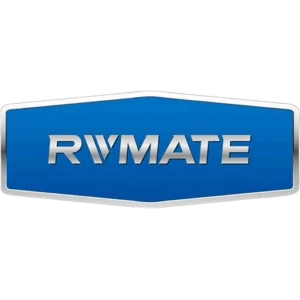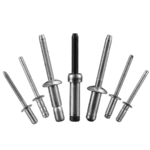Table of Contents
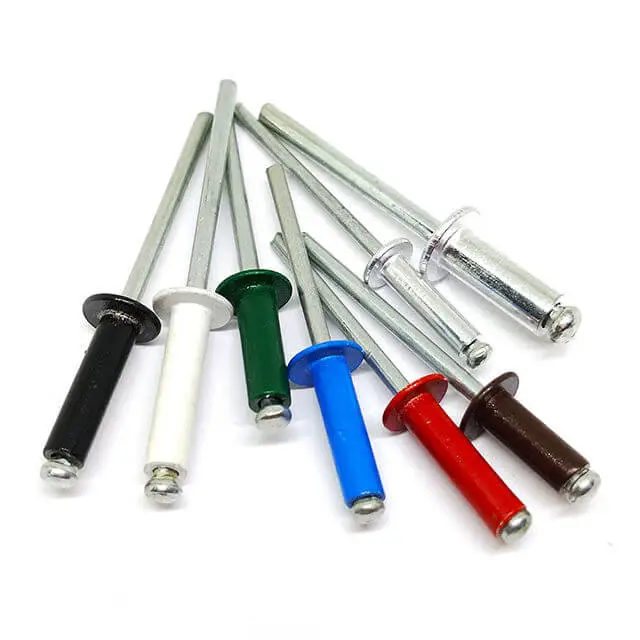
Do you need to know about pop rivet materials before you buy pop rivets?This guide details a wide range of pop rivet materials.Let’s read it together!
Table of Contents
There are a variety of different materials used to manufacture pop rivets, and you may need to understand the characteristics of these materials.
This guide will detail the characteristics of pop rivet materials and application scenarios. Each metal material has its own specific application scenario.
Basics of Pop Rivets
Pop rivets are a very commonly used fastener. It is specifically designed to make connections where contact can only be made from one side.
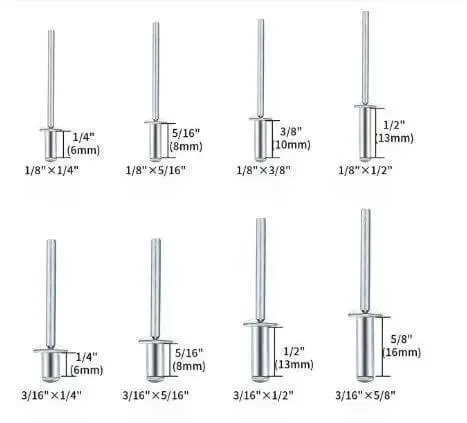
Pop rivets, also called blind rivets. It consists of a rivet body and a rivet mandrel . Pop rivets allow the joining material to form a stable connection without being damaged. It is a process that does not generate any heat. It can also join many different materials including metals, plastics and composites.
Compared to traditional joining methods, pop rivets are characterized by ease of operation and quick completion of the connection. For this reason, pop rives are used in many large-scale production projects for batch production.
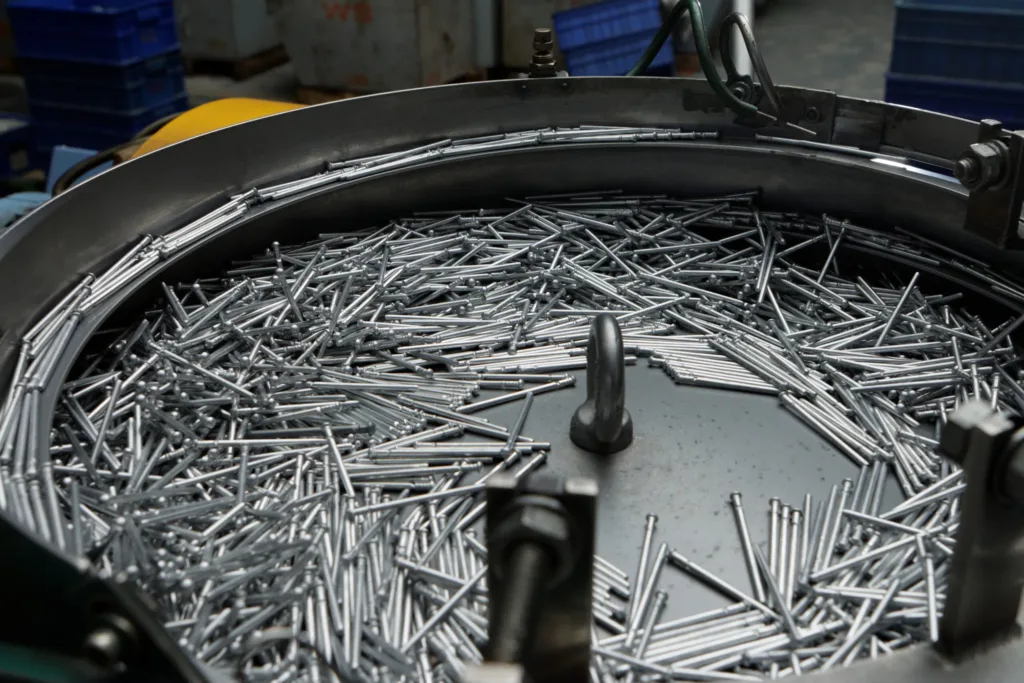
Contact Our Engineers Today
We provide you with high quality rivets, including customized services.
5 Types of Pop Rivet Material
There are many different raw materials for pop rivets in order to accommodate a variety of different application scenarios. Each different raw material has its own advantages and usefulness. Next, you will learn about the different types of pop rivet manterials.
1. Carbon Steel Pop Rivets
Carbon steel pop rivets are generally used in connections that require high strength and long-term durability. Carbon steel is a metal material with high strength and hardness that can withstand high tensile and shear forces. Therefore, pop rivets made from carbon steel perform well in structural connections.
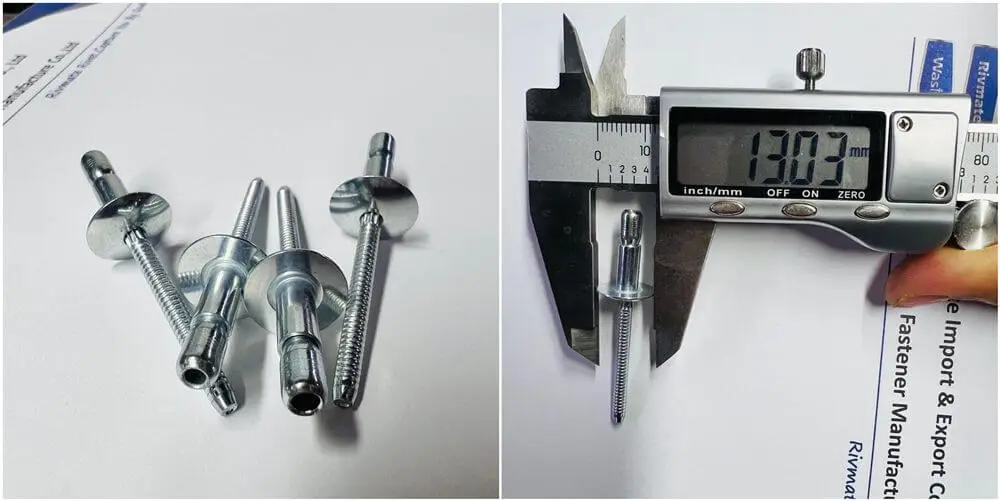
Compared to other metal materials, carbon steel is cost effective as it is very low in cost. The use of carbon steel pop rivets reduces the cost of materials while maintaining strength.
Applications for carbon steel pop rivets include critical joints in mechanical equipment and industrial manufacturing, and high-volume industrial applications.
2. Aluminum Pop Rivets
Stainless steel pop rivet is a connecting fastener with excellent corrosion resistance. It is resistant to moisture, chemicals and other corrosive environments.
The surface of stainless steel pop rivets forms a chromium oxide layer that prevents oxygen and moisture intrusion, thereby preventing corrosion. Different types of stainless steel (e.g. 304, 316) offer different levels of corrosion resistance in different environments.
Stainless steel pop rivets offer a variety of advantages. It provides excellent resistance to shear and pullout and can maintain a stable connection under high load conditions. Stainless steel pop rivets are used most often where vibration or shock loads are high.
There are many industries that use stainless steel pop rivets. These include marine engineering, chemical equipment, construction, automotive, aerospace and utilities that require aesthetics and maintenance costs.
3. Stainless Steel Pop Rivets
Aluminum pop rivets, one of the most commonly used rivets, offer a variety of advantages and features. You can find aluminum pop rivets on many products with lightweight designs.
Compared to other metal materials, aluminum has a lower density. In some weight sensitive applications, manufacturers choose to use aluminum pop rivets.
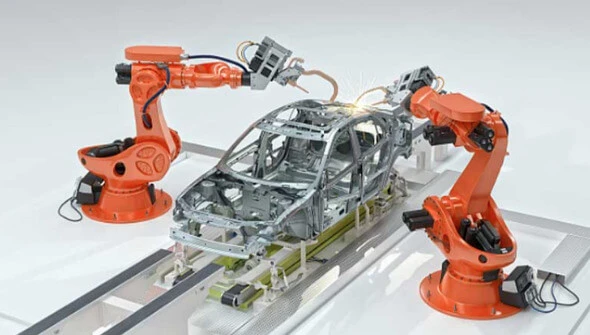
Nowadays, people are pursuing lightweight design for their cars, and aluminum pop rivets can provide a high strength-to-weight ratio for automotive manufacturing. Of course, aluminum pop rivets are also naturally oxidation-resistant, forming a dense film of aluminum oxide in the air to prevent further corrosion.
4. Copper Pop Rivets
Copper pop rivets offer benefits in specific applications that cannot be replaced by other materials.
In some electrical equipment, copper pop rivets provide extremely high electrical conductivity and connection reliability. In addition, copper pop rivets have excellent corrosion resistance. It forms a greenish patina in the atmosphere, protecting it from corrosion.
Copper has good electrical conductivity and corrosion resistance compared to other materials, but it can also be a bit more expensive.
5. Monel Pop Rivets
Monel is a nickel-copper alloy that offers excellent corrosion resistance and superb strength.Monel pop rivets are used in a wide range of applications where extreme durability and corrosion resistance are required.
Monel pop rivets are not commonly marketed as blind rivets because they are difficult and costly to produce.The main component of Monel is nickel (typically 63% to 70%) with copper and small amounts of iron, manganese and carbon. This high nickel content gives Monel excellent corrosion resistance, especially in seawater and acidic environments.
Monel Pop Rivets are known for their excellent corrosion resistance, high strength and toughness, and heat resistance. It has been used in marine engineering, chemical equipment, aerospace and heavy machinery.

Contact Our Engineers Today
We provide you with high quality rivets, including customized services.
Pop rivets offer a variety of benefits, some of which are listed below:
- Pop Rivets can be riveted by operating from one side only.
- Pop rivets are easy to install, using only a manual or electric rivet gun. Ideal for high volume production lines and field installations.
- Pop Rivets provide a strong and durable mechanical joint when properly installed.
- Pop Rivets can be used to join a wide variety of materials including metals, plastics, wood and composites.
- Pop Rivets are available in a wide range of materials (e.g. aluminum, steel, stainless steel, copper, etc.) and sizes. You can choose the right rivet material and size according to your specific needs, adapting to a variety of applications.
- After installation, Pop Rivets usually leave a flat and beautiful appearance.
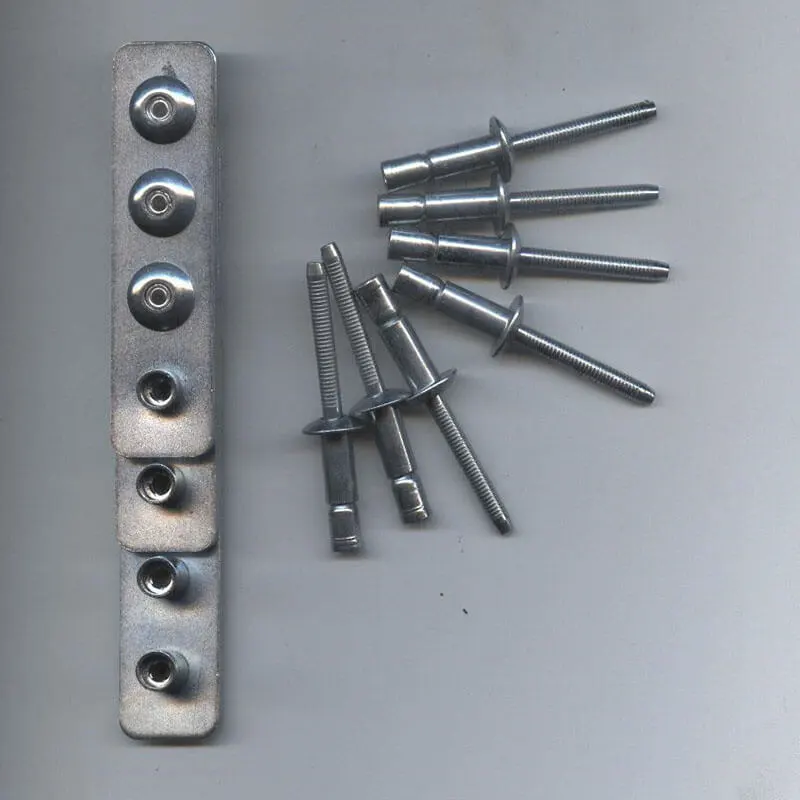
Of course, pop rivets aren’t perfect. In addition to its advantages, riveting has some limitations, including the following:
- Once installed, Pop Rivets cannot be easily removed. If disassembly is required, the rivets can only be removed destructively, which can damage the joining material.
- Although Pop Rivets provide a relatively strong connection, they are generally not as strong as bolted and screwed connections.
- Pop Rivets need to fit precisely into pre-drilled holes. Holes that are too large or too small can result in a failed rivet or a loose connection.
- Pop Rivets have limited length and clamping range and cannot effectively join materials that are too thick or too thin.
- When joining soft materials, the expansion of the rivet may cause deformation or tearing of the material.
Comparison of Different Pop Rivets Materials
By describing these 5 different pop rivets materials in the table below, we aim to give you an insight into the specific advantages and disadvantages of these 5 different materials.
| Pop Rivet | |||||
| Carbon Steel | Aluminum | Stainless Steel | Copper | Monel | |
| Strength | High strength for heavy duty applications | Moderately strong and lightweight | Very high strength for high stress environments | Moderate strength, good ductility | Extremely high strength for extreme conditions |
| Weights | heavier | lightweighting | heavier | heavier | heavier |
| Corrosion Resistance | Poor, need surface treatment to prevent corrosion | Excellent, natural resistance to corrosion | Excellent for corrosive environments | Good, suitable for outdoor and wet environment | Excellent, especially suitable for marine and chemical environments |
| Conductivity | general | favorable | mediocre | talented | mediocre |
| Abrasion Resistance | favorable | general | rare | general | excellent |
| Cost | Low to medium | Low to medium | high cost | Medium to high | high cost |
| Appearances | Needs a surface treatment to look good | natural glow | Natural luster, beautiful and durable | Reddish brown, turning copper-green over time | naturally |

Contact Our Engineers Today
We provide you with high quality rivets, including customized services.
Pop Rivet Material Selection
There are various factors that must be kept in mind when choosing pop rivet manterials for your project. Some of the factors that you need to consider in order to choose the right type of pop rivet manterials are listed below:
1. Application Environment
Before choosing the materials used in pop rivets, you need to consider the environment in which the pop rivets will be used. If the rivets will be exposed to corrosive environments such as moisture, salt spray and chemicals. Then you should choose stainless steel, aluminum or Monel rivets.
2. Required Strength
In structural applications where high strength is required, stainless steel, Monel or carbon steel rivets should be selected. monel is particularly well suited to maintain strength and durability in extreme conditions. Aluminum rivets, while lightweight, are less strong and may not be suitable for heavy-duty or high-stress environments.
For medium strength applications such as lightweight construction or general industrial use. Aluminum and copper rivets are suitable choices. They provide adequate strength and are easy to machine.
3. Weight Requirements
If your project has an overall weight requirement. For example, if your project is used in aerospace, automotive, or electronics, choose aluminum rivets. Because aluminum is lightweight, it reduces the weight of the overall structure.
4. Appearance and Decorative
Copper rivets are ideal if your project requires an aesthetically pleasing product. Their reddish-brown appearance and the copper-green color that develops over time provide a unique decorative effect. Stainless steel rivets also offer good aesthetics and durability.
5. Cost
Aluminum and Carbon Steel rivets are typically lower in cost and are suitable for projects with limited budgets or high volume production applications.
Stainless steel, copper and Monel rivets are more costly and are usually used only when their special properties are required.
Conclusion
The choice of material for Pop Rivet should be weighed against the application environment, strength requirements, corrosion resistance, weight, cost, electrical conductivity, appearance and special properties. The following are recommended uses for each material:
- Carbon Steel: Suitable for heavy-duty and structural connections, but requires surface treatment to prevent corrosion.
- Aluminum: Lightweight and corrosion resistant, suitable for aerospace, automotive and electronics.
- Stainless steel: High strength and corrosion resistant, suitable for harsh environments and high stress applications.
- Copper: excellent electrical conductivity and antimicrobial resistance, suitable for electrical connections and decorative applications.
- Monel: extremely high corrosion resistance and strength for marine, chemical and high temperature applications.

Contact Our Engineers Today
We provide you with high quality rivets, including customized services.
Frequently Asked Questions
1.What Applications is Aluminum Pop Rivet Suitable for?
Aluminum Pop Rivet is suitable for aerospace, automotive, electronics and outdoor applications due to its light weight and excellent corrosion resistance. It performs particularly well in applications where weight reduction is required.
2.What Are the Advantages of Stainless Steel Pop Rivet over Carbon Steel Pop Rivet?
Stainless Steel Pop Rivet offers higher corrosion resistance and strength for applications that are exposed to harsh environments or require long-term stability. Carbon Steel Pop Rivet is less costly, but has less corrosion resistance and usually requires a surface treatment.
3.What are the Main Uses of Copper Pop Rivet?
Copper Pop Rivet is primarily used in electrical connections, grounding systems, decorative applications, and in medical and food processing equipment.
4.When Should I Avoid Using Aluminum Pop Rivet?
Aluminum Pop Rivet is not suitable for connections with high strength requirements or in high temperature environments. This is because aluminum has relatively low strength and may not maintain its structural integrity at high temperatures.
5.How Does the Machinability of the Pop Rivet Material Affect Its Application?
The machinability of the material determines the ease of production and installation. Aluminum and copper are easy to machine and are suitable for complex shapes and high volume production. Stainless steel and Monel are more difficult to machine, but offer higher strength and corrosion resistance for demanding applications.
Conclusion
Since you have carefully read the above mentioned guide, many details about pop rivet manterials must be clear by now. You now know the types of pop rivet manterials and their characteristics. You can choose the right pop rivet manterials according to the actual needs of your project.
Rivmate Rivet: A Combination of High Quality and Safety!
Are you ready to choose high quality, reliable pop rivet for your project?At Rivmate rivet, you will get the best value for money pop rivet, which uses high quality raw materials. So, contact Rivmate today and realize a stable and secure connection!
